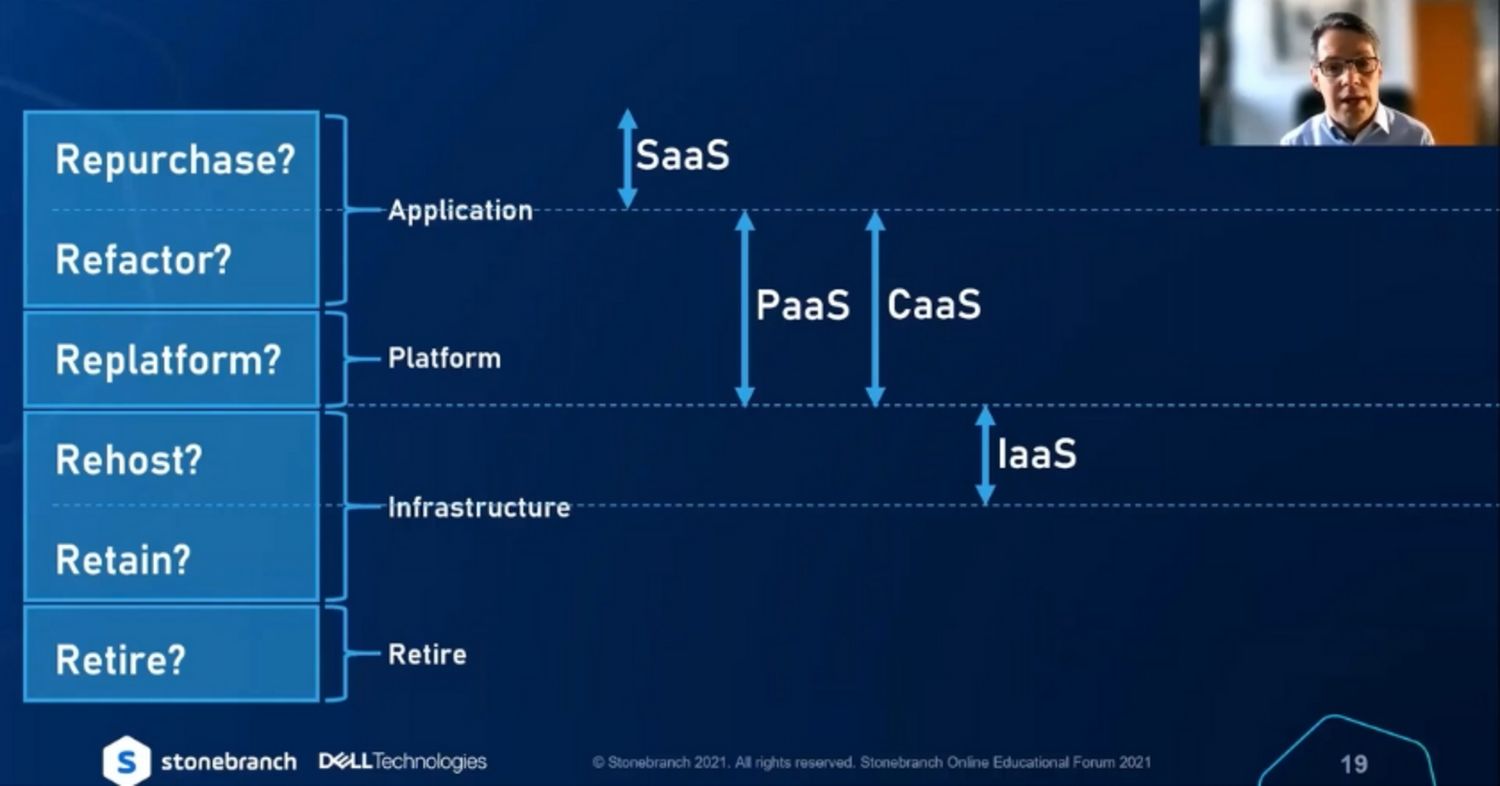Don’t Be Cloud First, Be Cloud Smart
Is cloud first always the best choice? Experts from Gartner share the most important factors to consider when choosing on-prem, cloud (private or public), or multi-cloud architectures.

Cloud first strategies emerged in response to a new era of data that requires agility, flexibility, and predictability. For many organizations, that has led to ambitious, multi-year, digital transformations. But we’ve all seen examples of cloud-first strategies deteriorating into cloud-only approaches — even when the use case doesn’t fit for cloud computing.
So how do you decide which approach to take? And what does IT automation look like in a cloud-smart world? Keep reading to see what the experts have to say.
Gartner’s Three Cloud Data Management Architectures
In Gartner’s report, What Are the key Factors to Consider When Choosing A Cloud Data Management Architecture? The authors identify three primary cloud solutions: on-premises to cloud, multi-cloud, and intercloud. Let’s look more closely at each.
On-Premises to Cloud
Also referred to as ground-to-cloud, data moves between an on-site system and a cloud-based system. Data may be actively streamed from one location to the other, or accessed only as needed (on-demand).
An active example could be a database management system (DBMS) on-premises that feeds data to a business intelligence (BI) application in the cloud, or vice versa. On-demand structures tend to be more use-case specific, such as differing DBMS instances for development, quality assurance (QA), disaster recovery, and production — any of which can reside on-premises or in the cloud.
Multi-Cloud
In this scenario, data moves on-demand across multiple CSPs. This is much like the differing DBMS instances available in the on-premises to cloud example, but this time, the QA instance may be in Azure, disaster recovery in GCP, and the rest in AWS.
Intercloud
Like multi-cloud, data moves between multiple CSPs. Unlike multi-cloud, the data actively streams between clouds. Here, Gartner gives the example of a PowerBI application that connects to a Salesforce database outside Azure.
What’s the Best Cloud Architecture?
There isn’t a best. There’s a best-fit for each organization, application, and use case. That said, Gartner highlights a few key factors to consider when making your decision:
- Latency. Data takes longer to travel between on-premises and cloud environments than it does cloud-to-cloud. High latency may be acceptable when performing a disaster-recovery backup, but less so when transferring customer order data for fulfillment. How much of a delay is acceptable to your organization?
- Compatibility. When your QA environment is on-prem and your production environment is in the cloud, how certain can you be of code compatibility between the two? According to Gartner, “Many organizations may not be comfortable with anything less than 100% code compatibility between the cloud and on-premises environments, in turn limiting the CSP selection to those that can meet these rigorous requirements.”
- Regulatory requirements. Depending on your industry, business locations, and customer locations, the data you collect may be subject to laws involving data sovereignty and geographic restrictions. Fully understanding these laws and how they apply to your data management practices may impact your IT architecture decisions.
- Data flow direction and volume. Most cloud service providers (CSPs) charge fees when data leaves their environment, not when it comes in. Knowing your providers’ egress fees and the volume of data leaving each CSP environment can help you make better financial decisions about where your data resides… even if that means on-premises.
Your organization will likely have unique considerations that go beyond these three, but they form a firm foundation for you to make smart IT architecture decisions. After all…
Cloud First Isn’t Always Cloud Smart
In a recent Stonebranch webinar, Dr. Roland Kunz from Dell Technologies describes a new era of working with data that requires more agility in application and service delivery. According to a study done by Dell, 89% of organizations recognize that they need a more agile infrastructure to quickly adapt to today’s unpredictable shifts in business, politics, and public health.
Many companies believe that realizing the full benefit of the cloud means adopting a cloud-first approach. But while Dr. Kunz acknowledges that the “cloud is a method for accelerating business,” that doesn’t mean the cloud is always the best option.
What Does It Mean to Be Cloud Smart?
“In order to find the right multi-cloud operating model, you need to find service providers to right-place apps and workloads where you need them, to either save money or become more efficient.”
— Dr. Roland Kunz, Dell Technologies
Maximizing cost-effectiveness and efficiency are always high on business leaders’ quarterly agendas. When evaluating your traditional models, there are four deployment options to consider:
- Redo or repurchase the service
- Put the service on a new platform
- Put the service on a new infrastructure
- Get rid of the existing service and go back to #1
When you apply the insights gained from Gartner’s key factors — latency, compatibility, regulations, and data flow direction and volume — to these deployment options, Dr. Kunz believes that most organizations will end up spreading their business processes across a hybrid mix that looks like the graphic below.

What Does IT Automation Look Like in a Cloud-Smart World?
It looks a lot like Gartner’s definition of a service orchestration and automation platform (SOAP).
To enable cloud automation and cloud orchestration across SaaS, PaaS, CaaS, IaaS, and modernized infrastructure systems, you need automation that can work across all of them. Traditional job schedulers don’t even know the cloud exists. Modern cloud schedulers consider those traditional schedulers obsolete. Most organizations, however, live somewhere in the middle.
A SOAP like the Stonebranch Universal Automation Center (UAC) unifies and orchestrates automation workflows throughout your multi-cloud and hybrid IT environments. It even offers pre-built integrations that are safe and secure for cloud service providers, infrastructure management tools, and business applications.
Start Your Automation Initiative Now
Schedule a Live Demo with a Stonebranch Solution Expert






